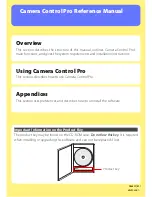
342
ADOBE PHOTOSHOP CS2
User Guide
To toggle between the Masked Areas and Selected Areas options for quick masks, Alt-click (Windows) or Option-click
(Mac OS) the Quick Mask Mode button.
3
To choose a new mask color, click the color box, and choose a new color.
4
To change the opacity, enter a value between 0% and 100%.
Both the color and opacity settings affect only the appearance of the mask and have no effect on how underlying areas
are protected. Changing these settings may make the mask more easily visible against the colors in the image.
See also
“About the Swatches palette” on page 506
To create an alpha channel and add a mask
You can create a new alpha channel and then use painting tools, editing tools, and filters to create a mask from the
alpha channel. You can also save an existing selection in a Photoshop or ImageReady image as an alpha channel that
appears in the Channels palette in Photoshop.
1
Do one of the following:
•
To create a new alpha channel using the current option settings, click the New Channel button
at the bottom
of the Channels palette. Skip to the note in step 6.
•
To create an alpha channel and specify option settings, either Alt-click (Windows) or Option-click (Mac OS) the
New Channel button at the bottom of the Channels palette, or choose New Channel from the Channels
palette menu.
2
If you are specifying option settings, begin by typing a name for the alpha channel in the Name text box of the
New Channel dialog box.
3
To set a display option for the mask, select one of the following in the New Channel dialog box:
Masked Areas
Sets masked areas to black (opaque) and selected areas to white (transparent). Painting with black
Mask button in the toolbox becomes a white circle on a gray background
.
increases the masked area; painting with white increases the selected area. When this option is selected, the Quick
Selected Areas
Sets masked areas to white (transparent) and selected areas to black (opaque). Painting with white
increases the masked area; painting with black increases the selected area. When this option is selected, the Quick
Mask button in the toolbox becomes a gray circle on a white background
.
4
To specify the appearance of the mask, any of the following in the New Channel dialog box:
•
To choose a new mask color, click the color box and then use the Adobe Color Picker to select a new color.
Click OK to close the Adobe Color Picker after selecting a color.
•
To change the opacity, enter a value between 0% and 100%.
Both the color and opacity settings affect only the appearance of the mask and have no effect on how underlying areas
are protected. Changing these settings may make the mask more easily visible against the colors in the image.
5
Click OK to close the New Channel dialog box.
6
(Optional) Click the eye icon
next to a color channel or the composite color channel, such as RGB, to display
the image with a color overlay showing the mask.
















































